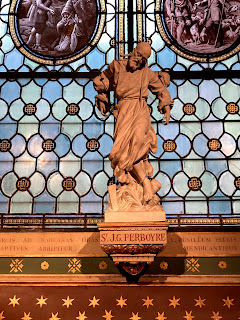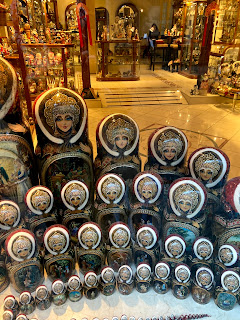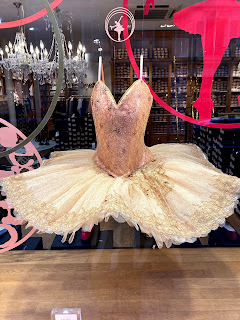Most Mondays I take a ride on the metro to a part of Paris I used to live in, long ago. I walk from Montparnasse-Bienvenue station down the boulevard, crossing both the very long rue de Vaugirard and the more interesting rue du Cherche-Midi. Later in the afternoon heading back to the north of the city I go on foot along the rue de Sèvres, across the boulevard Raspail by the Hotel Lutétia and the boulevard St Germain by the church and through the rue Bonaparte to the Seine, where I catch the 39 bus at the pont du Carrousel.

The Lutétia was for a long while the only luxury hotel on the Left Bank and, as a result of its location right by St Germain, hosted all the big names of the day inside its Art Nouveau walls: Josephine Baker, Picasso, Peggy Guggenheim and many others. The Nazi Abwehr (counter-espionage) took it over during the Occupation, entertaining some of France’s more notorious collaborators, but after the war De Gaulle, who spent one night there on his way to London, turned it into a centre for displaced persons. At which point it redeemed its reputation to some extent by helping reunite thousands of ex-concentration camp prisoners with their families. It has changed hands several time since, had an extensive make-over in 2018 and is once again entertaining the cultural elite and the rich. Some of them maintain personal suites on the upper floors, decorated to their taste. I don’t think there’s a helipad on the roof but I could be wrong.
I sometimes call in at the Grande Epicerie across from the hotel on the other side of the jardin Boucicaut. The last time I was there in late January the British shelves were empty apart from a line of Heinz baked beans and a few tins of Birds powered custard. It felt like we were back in the years immediately following the war, whereas the war has really only just begun, as Brexit takes down one UK business after another. (The empty shelves syndrome is manifest in the M&S food outlets too. For a while the one in Châtelet had packets of peanuts in the cold cabinets – a manager with a sense of humour? Last week those had gone and there was only a forlorn emptiness and one lonely man on the checkouts).
The rue de Sèvres has gone by many names since it was first recorded as a thoroughfare in the 13th century. Then it was the Chemin de la Maladrerie, named thus because there was a leper hospital on the site of the present-day jardin Boucicaut. From one end of the street to the other you can trace some of the great moments of French history. Catholic institutions and churches abound and the hôpital Laennec, now turned into private apartments and a student resident, reminds us of the role French doctors once played in advancing medical science. Laennec was the inventor of the stethoscope. No 17 housed Marc Bloch, the French historian and Resistance fighter for a while. He was shot by the Nazis in the closing months of the war.
The Congregation of the Mission is more fully described as ‘the Society of Apostolic Life of Pontifical Right (for Men)’. The clue is in the word apostolic. Converting the poor to Christianity - Evangelizare pauperibus misit me, (their motto), has been their mission since the society was founded by Saint Vincent de Paul in the early 17th century.
The chapel on the rue de Sèvres (at no. 97) is hidden behind a modest door onto the street. Step over the threshold though, let the padded door swing shut behind you and you find yourself inside something like an oversized jewellery box, a sumptuously gilded world, as remote as it is possible to be from the favelas and slums where the Lazaristes are most active.


Once across the boulevard St Germain you are into the small streets leading back from the river. This small quartier, sometimes called ‘le carré des arts’, is all art galleries, fashion houses where entry is by appointment only and nothing in the window has a price tag, Russian dolls and one fine independent bookshop, with sheep in attendance And on the left is l’Ecole des Beaux Arts, closed to the public during the pandemic.
The nearly empty 39 bus comes rattling along the rue Bonaparte, swings round onto the quai, picks me and carries me back to my quartier. No Hermès outlet here, no silk pyjamas at 1500 euros a pop, no sequin-spangled tutus, but live music and dancing with the migrants,
nesting boxes in the trees and home-made soup in the pot.










Once again Rosie, I feel like I've just wandered the streets, seen the sights, heard the sounds and smelt the smells with you. Thank you x
ReplyDeleteThanks Rosemary. I lived for a few months on the rue de Sevres, and this brought back memories - though I fear rather unreliable ones...Great writing. T x
ReplyDelete